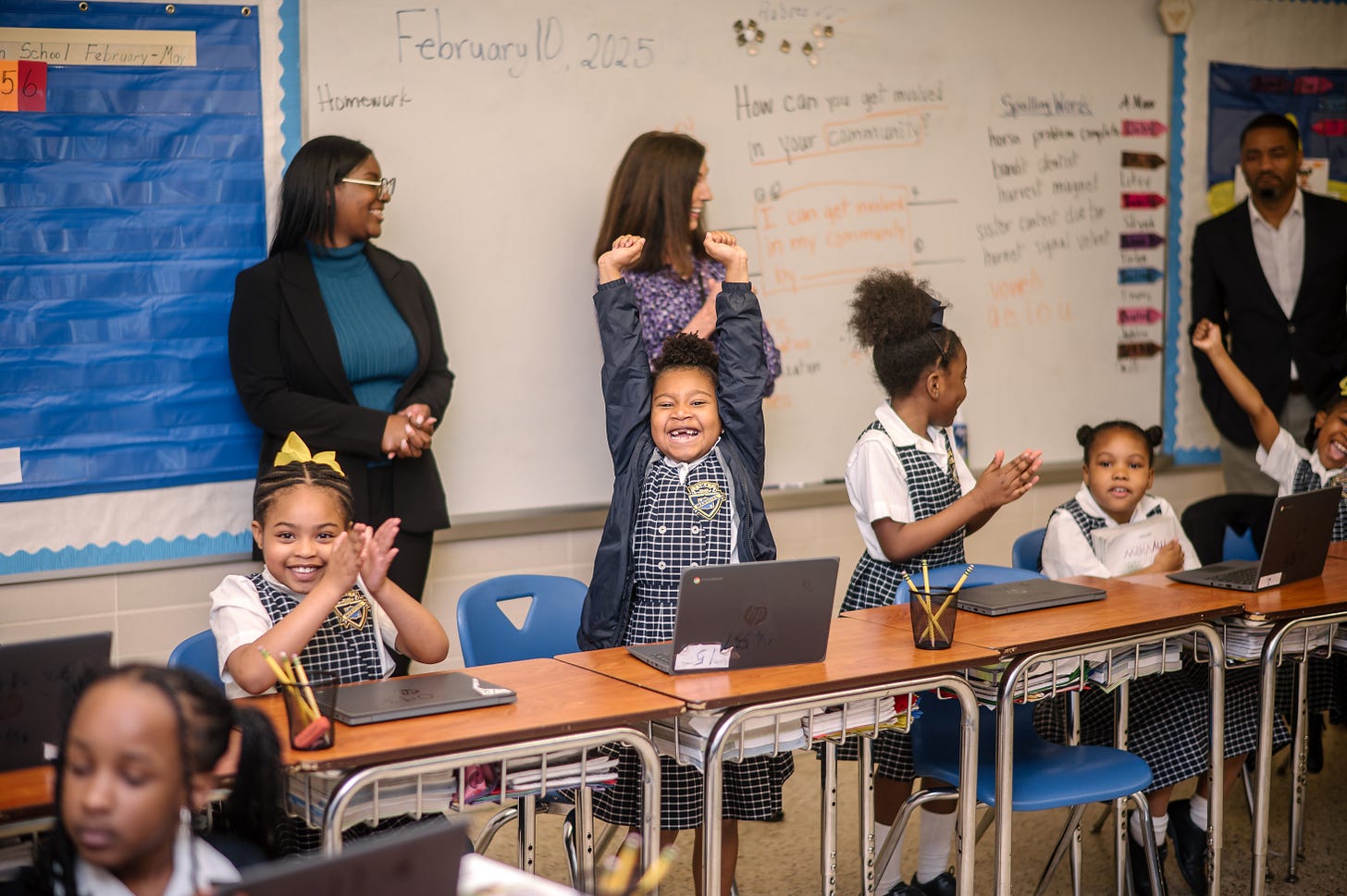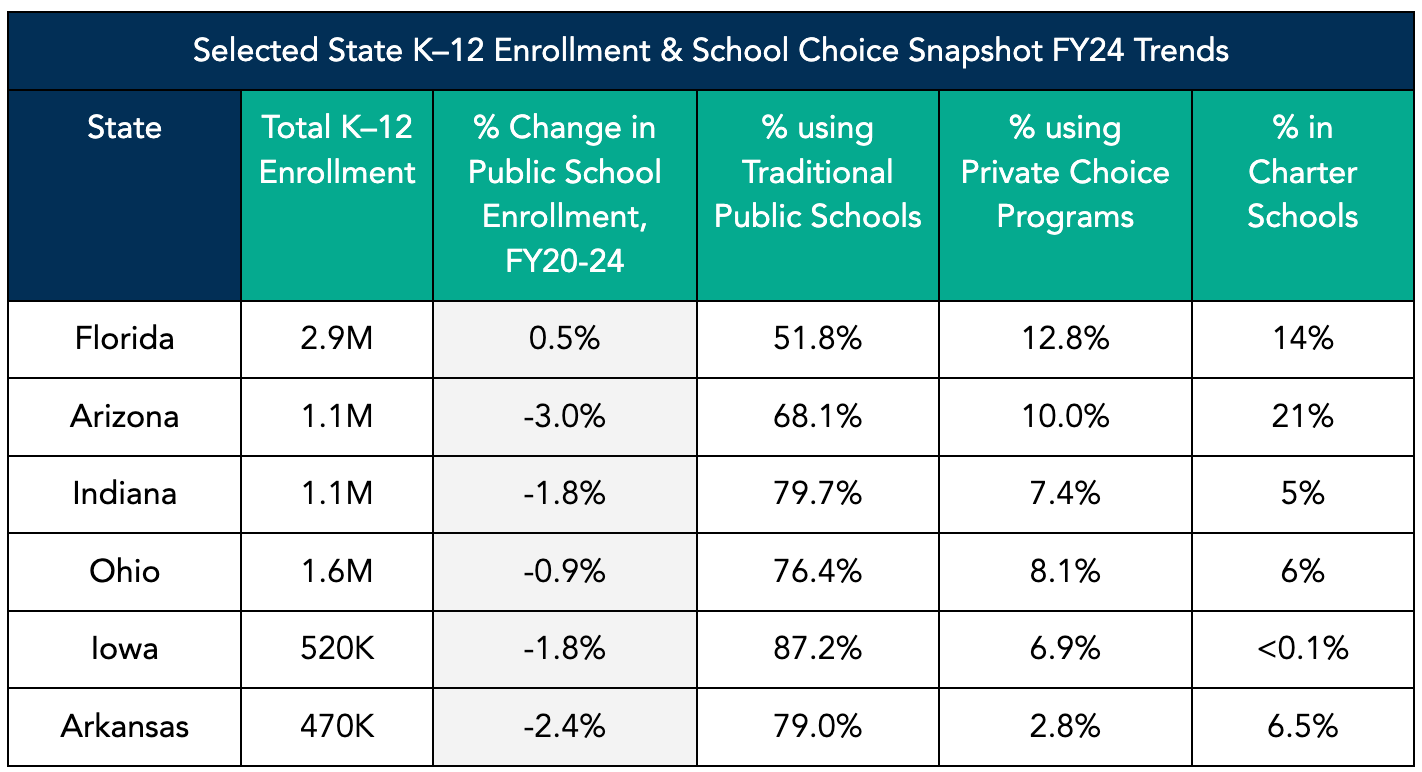The New Back to School Phenomenon
Education sells.
Student Success Breeds Joy
It’s a fact—and a fait accompli—that when people have access to a variety of qualitatively different options, they will engage.
Whether it’s new products like dark-chocolate salted bark (yes, I accept donations), new modes of transportation like Uber, or new travel luxuries like Airbnb, consumer behavior can make or break a product or service.
Historically, products that fail to build a constituency don’t last very long—unless they’re subsidized by a large public entity that doesn’t need to satisfy anyone to stay afloat.
You know where this is going. When educational options become available, and parents can “purchase” a new or different kind of education that is qualitatively superior, they engage. It’s not rocket science. And when a school is the right fit, a student’s success breeds real joy.
According to the latest survey data from the National School Choice Awareness Foundation, “nearly three-quarters (74%) of U.S. parents of school-aged children, representing an estimated 47 million parents, considered sending at least one of their children to a different school over the past year.”
And as you can see, preliminary trend data confirms vastly more are doing just that.
Families are Choosing to Stay—Because They Have Options
Let’s face it. Good education sells. While a majority of parents—even in states with expansive choice—still “choose” traditional public schools, the key point is they are choosing to stay rather than being forced to stay.
That’s a far cry from pre-1998, when 90% of students attended traditional public schools, precisely because there weren’t choices afforded by one’s education dollars - there was just one system. A monopoly.
Sell Public Schools—And Blame Choice
Some argue that parents are leaving traditional public schools because schools aren’t marketing themselves effectively. And apparently, it feels novel enough for The New York Times to cover.
A “bougie” school district consultant hired to help districts attract families back told a Times reporter “that school districts must offer slicker tours, better customer service, and a compelling argument that they are better than the growing number of alternatives.”
Slicker tours, huh? What about better education? Concern for student outcomes and learning differences? Less bureaucracy? More parent responsiveness?
Nope. Districts seem to believe that it’s not about education itself; that it’s all about the sale. It gets “better”:
“In mid-May, [consultant] Caissa’s team of paid canvassers fanned out across Orange County, looking for parents. Caroline Christian, a 25-year-old with a degree in marketing, set up a table at a Boys and Girls Club after-school program.”
So insulting to parents. Really. At least in the early days of school choice—whether in the first choice states or with the earliest charter schools—public schools sent their A-team to greet parents. Superintendents would routinely talk about doing a 360-degree evaluation to see how they could improve.
Sure, some did some marketing. It’s been that way for decades. But you can’t market your way out of a monopoly collapse. And some that tried to actually improve, did.
Milwaukee and Miami: Case Studies in Response
As the Milwaukee Parental Choice Program expanded, Milwaukee Public Schools (MPS) superintendents initially responded by engaging parents directly about how the district could improve. MPS even increased enrollment and stabilized its market share amidst growing competition, at first.
But the early momentum didn’t last. Over the next two decades, an unrelenting focus on the status quo within MPS meant the district failed to keep pace with families’ evolving demands. Meanwhile, Milwaukee’s school choice programs more than doubled, now serving nearly 30,000 students—about a quarter of the city’s student population.
Florida’s seismic shifts - with expansive statewide choices - impacted Miami greatly. As the Times’ story reports, between 2019 and 2023, two-thirds of the state’s traditional public schools lost enrollment. While lower birth rates are a small factor, the much bigger issue is the explosive growth of school choice programs, charter schools, and the public’s realization that their district no longer has to be their only option.
More than a year ago, Politico reported:
“Since 2019-20, the districts of Broward, Duval, and Miami-Dade have lost around 53,000 students… prompting discussions about closing or repurposing schools to save costs.”
As alternative education options grew, traditional public schools faced ongoing financial and operational difficulties as parents opted for other choices.
But how did they respond?
Miami-Dade reinvented itself as a “choice district.” Today, over 60% of students actively select their school or program from district-offered magnets, academies, and specialized tracks. They’ve expanded career academies, dual-enrollment programs, and tech-rich innovation hubs to retain families seeking personalized education paths.
They’re still far from matching the dynamism of true choice markets, but it’s a huge improvement.
Parents Are Waking Up—and Walking
The consultant is right about one thing: the days of monopolies are over.
So are the days of parent ignorance—or apathy—about education.
That was the focus of another news report this week. Washington Post reporter Laura Meckler provided a comprehensive look at the rise of education options, focusing on Arizona and the public school closures that have followed.
The impact of choice could not be clearer, especially in the face of closures that disrupt relationships, communities, and jobs.
“The [Roosevelt] district’s failings help explain the rise of microschools operated by Black Mothers Forum, which began during the pandemic. Rev. Janelle Wood says Roosevelt should look inward to understand why some families have chosen alternatives. Wood emphasizes,
‘They did not listen to their clients, which is their students and families. When you’re not listening… at some point they stop talking and start walking.’”
The story also features Rose Burney, a mother of five, who was torn between sending her children to their reassigned district school or enrolling them in a high-performing BASIS Charter School. After seeing test results confirming her daughter was failing in multiple subjects, the decision became clear: Burney chose BASIS.
Dynamic Times Call for Dynamic Leaders
These stories are just the latest reports on the massive shifts in educational opportunity occurring in states with maturing school choice laws. As kids head back to school, more parents are aware—and more are asking the essential question: Does this school work for my child?
For some, like Mrs. Burney, they didn’t even know to ask until circumstances forced them to.
At CER, we understand that dynamic times call for dynamic leadership. That’s why I’m excited to announce that our bench at CER has widened. With deep experience in policy, government affairs, communications, education operations, and edtech innovation, the addition of these new team members reflect the importance of this moment and underscores CER’s commitment to driving bold reforms and empowering families with educational options.
Read all about it here!
Something specific you want to read about? Let me know in the comments. And thank you! - Jeanne



Fix K-12
https://torrancestephensphd.substack.com/p/forget-free-college-how-about-we
Hi Jeanne,
Thank you for this insightful article on the evolving landscape of education. As someone from Miami and the Director of Learning at The Hive Interactive Centers, I can truly relate to your investigation into the changes in traditional education models, especially the points about Miami's response to school choice. The diversity that keeps our city buzzing is certainly reflected in the demand for varied educational options, and we at The Hive Interactive are keenly aware of how these rapid shifts impact organizations like ours. I'm a strong proponent of school choice, and your piece really resonates with my understanding of the situation here.